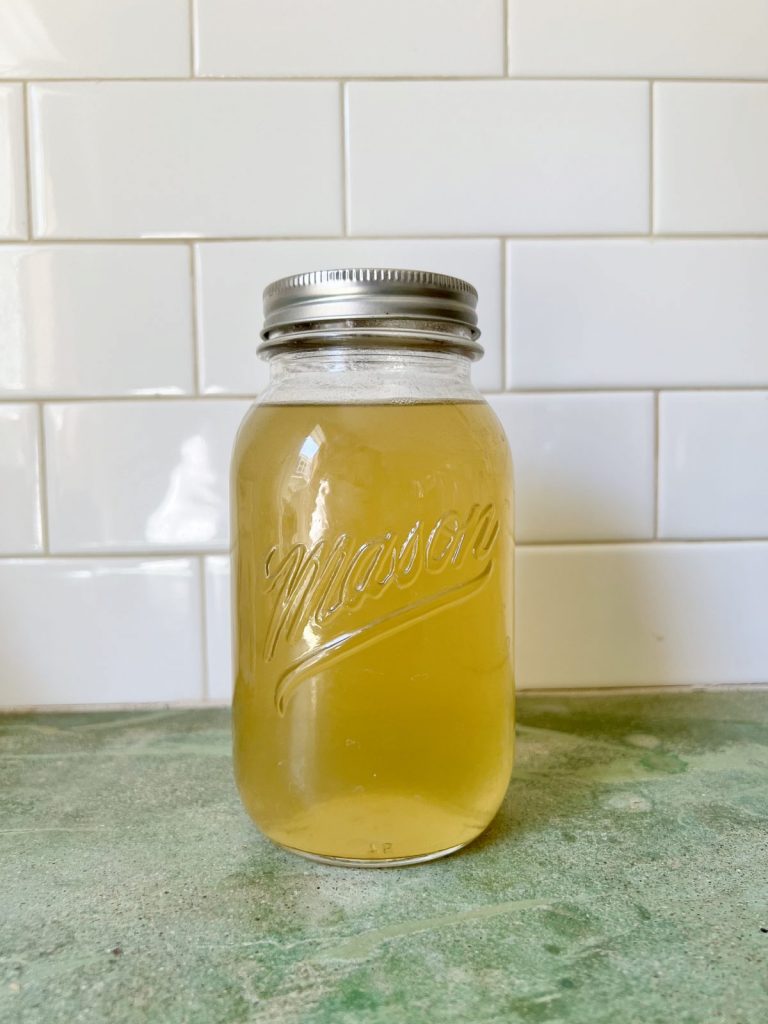(Scroll to the bottom for the recipe, or read on for answers about lobster stock!)
You can stretch your lobster dinner into an exceptional stock! Just clean and freeze your lobster tails in a freezer bag until ready, then use the recipe below. This recipe is SO SIMPLE that I can’t believe I waited until the end of lobster season to do it. Here’s a video of my husband commercially fishing spiny lobster in California:
@megan_waldrep A day in the life of a CA Lobsterman off Santa Barbara🌴 #commercialfishing #commercialfishinglife #lobsterfishing #californiafishing #channelislands
I skipped several steps from traditional recipes to save time, and this stock turned out great! Some say to break and sauteé the shells for a minute, and others say to roast the shells in a 400-degree oven for ten minutes. I just simmered everything simultaneously, and it turned out light and savory, which is the goal. I think I achieved that extra flavor by boiling the veggies with the shells. So good.
Pro Tip: Do not let the water boil! Keep it to a simmer, about 180°F. You’ll know it’s simmering when tiny bubbles occasionally rise to the surface.

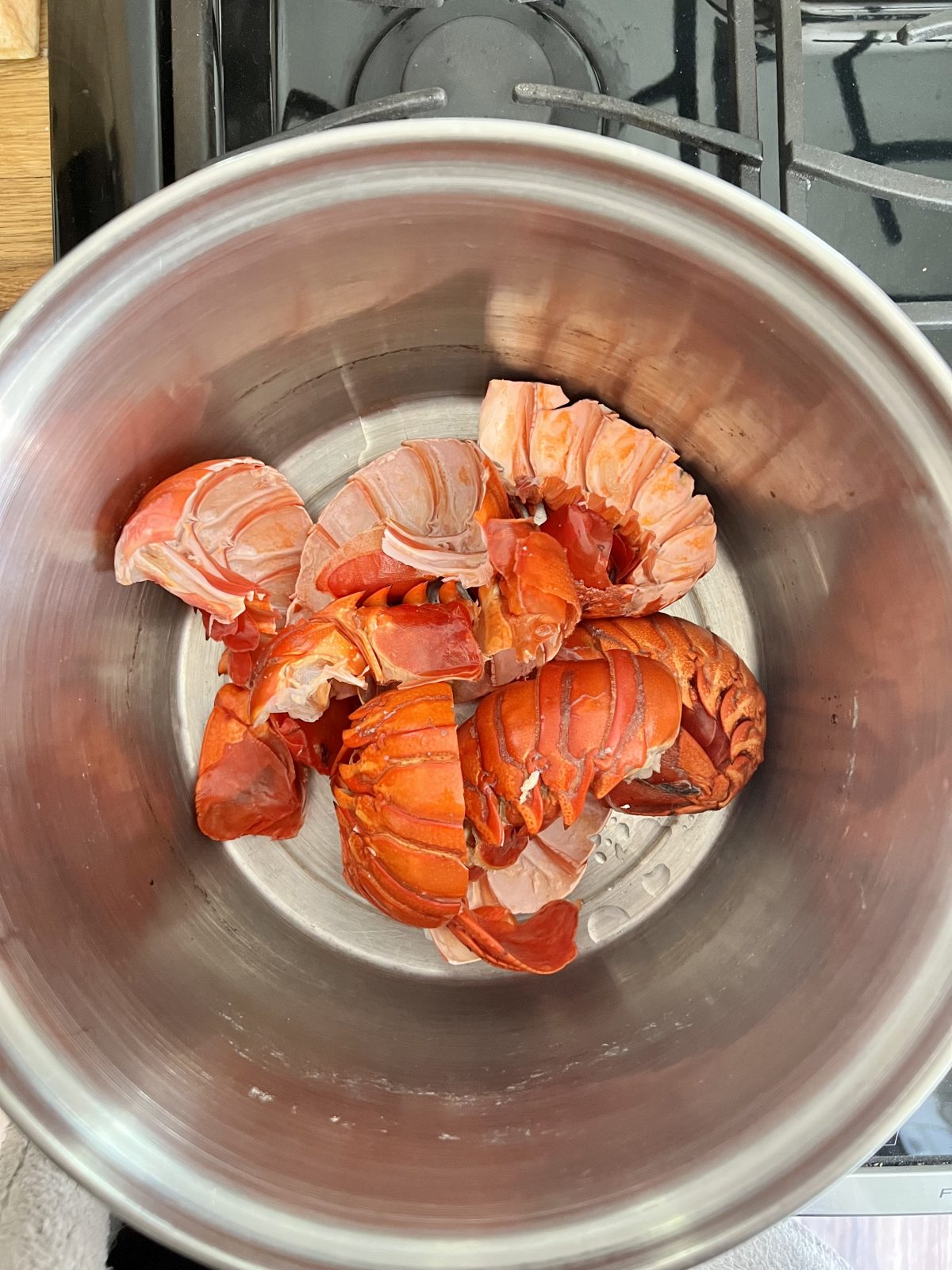
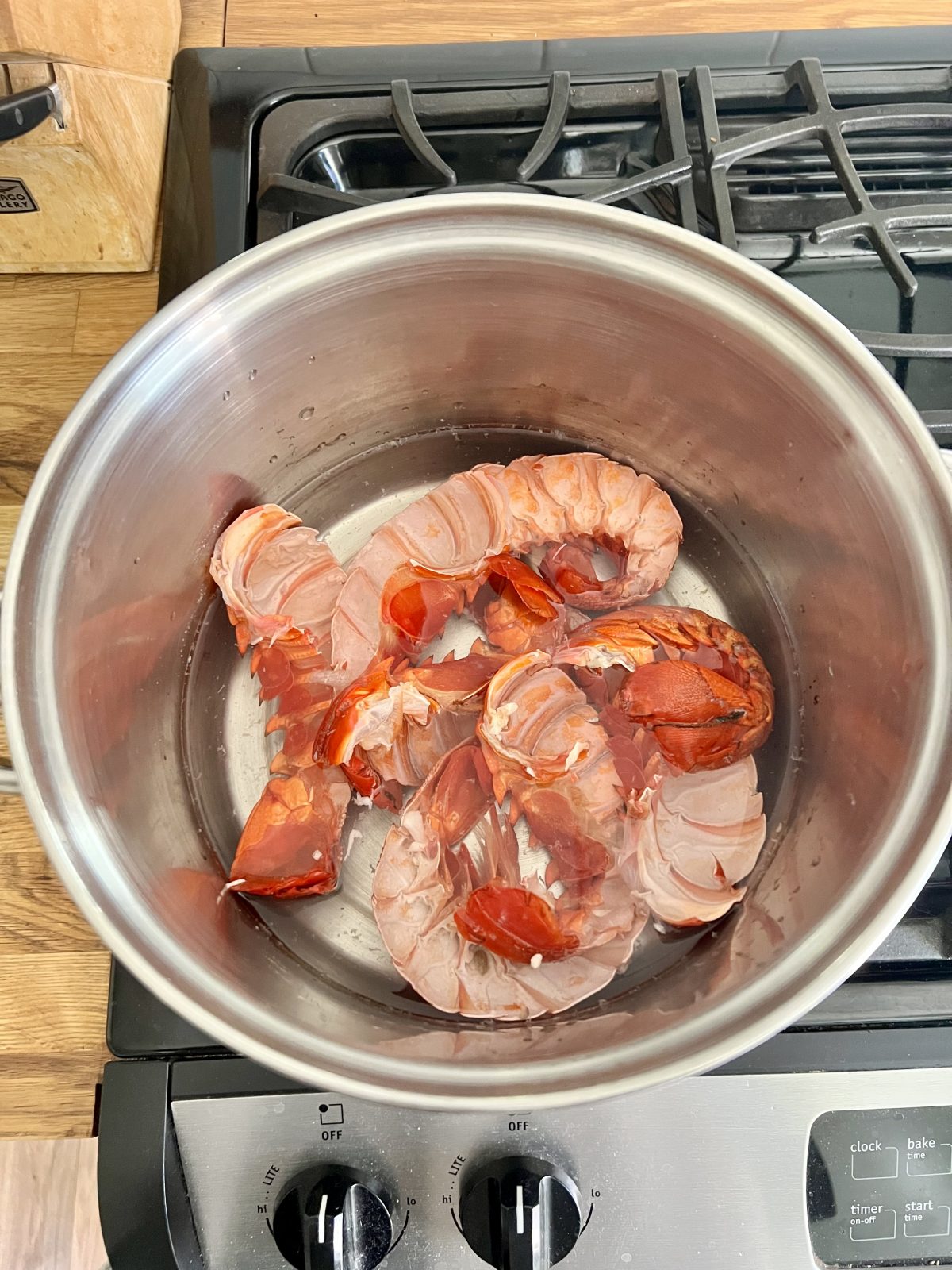

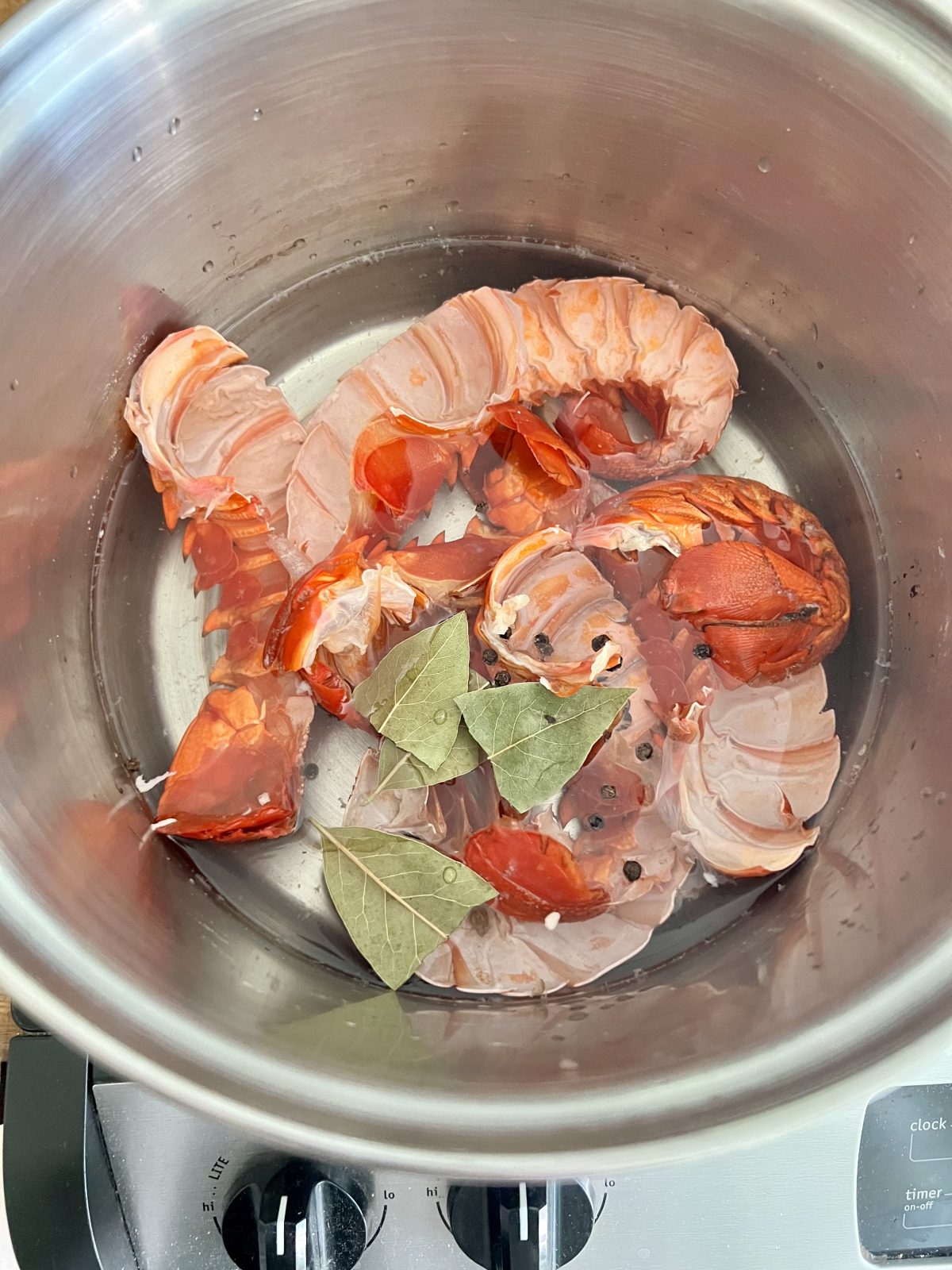
Before we get started, I’ve answered a few questions you may have:
Can you use the body of lobster for stock? (Can I use the heads, guts, etc.?)
What can you use lobster stock for?
Can you overcook lobster stock?
What is a substitute for lobster stock?
Can you use the body of lobster for stock? (Can I use the heads, guts, etc.?)
The recommendation is that you only use clean shells and not the innards. Shells include the tails, heads, and spinnerets. Though many cultures use every part of the shellfish, it is said that the guts can make a bitter stock. Look out for the head sac, located in the head, which happens to be the lobster’s stomach. The head sac can contain granular parts like bones and small pieces of shells.
What can you use lobster stock for?
Everyone mentions risotto, but I would also use it to make gumbo, this easy tomato fish soup, bisque, chowder, sauces, seafood pasta, or in plain rice for a seafood stir fry or paella to take it to the next level.
Can you overcook lobster stock?
Yep. Careful not to bring it to a rolling boil or cook it for too long because it can affect the flavor, making it lifeless and bitter.
What is a substitute for lobster stock?
You can make stock with the shells of crabs, shrimp, lobster, or a combination. Other than shellfish, you can also use this recipe with fish bones, turkey wings, veal bones, and roasted vegetables to make flavorful stocks.
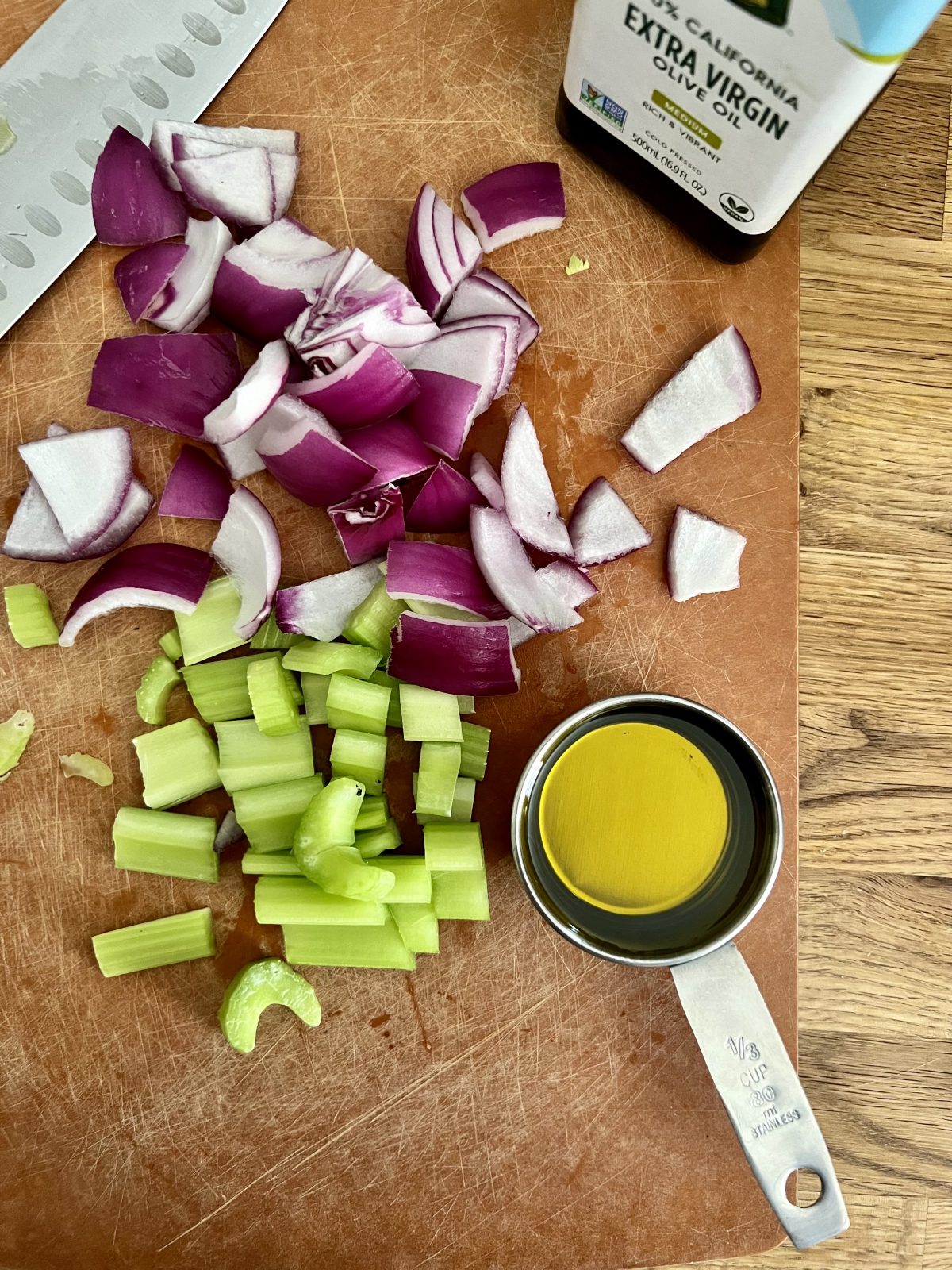
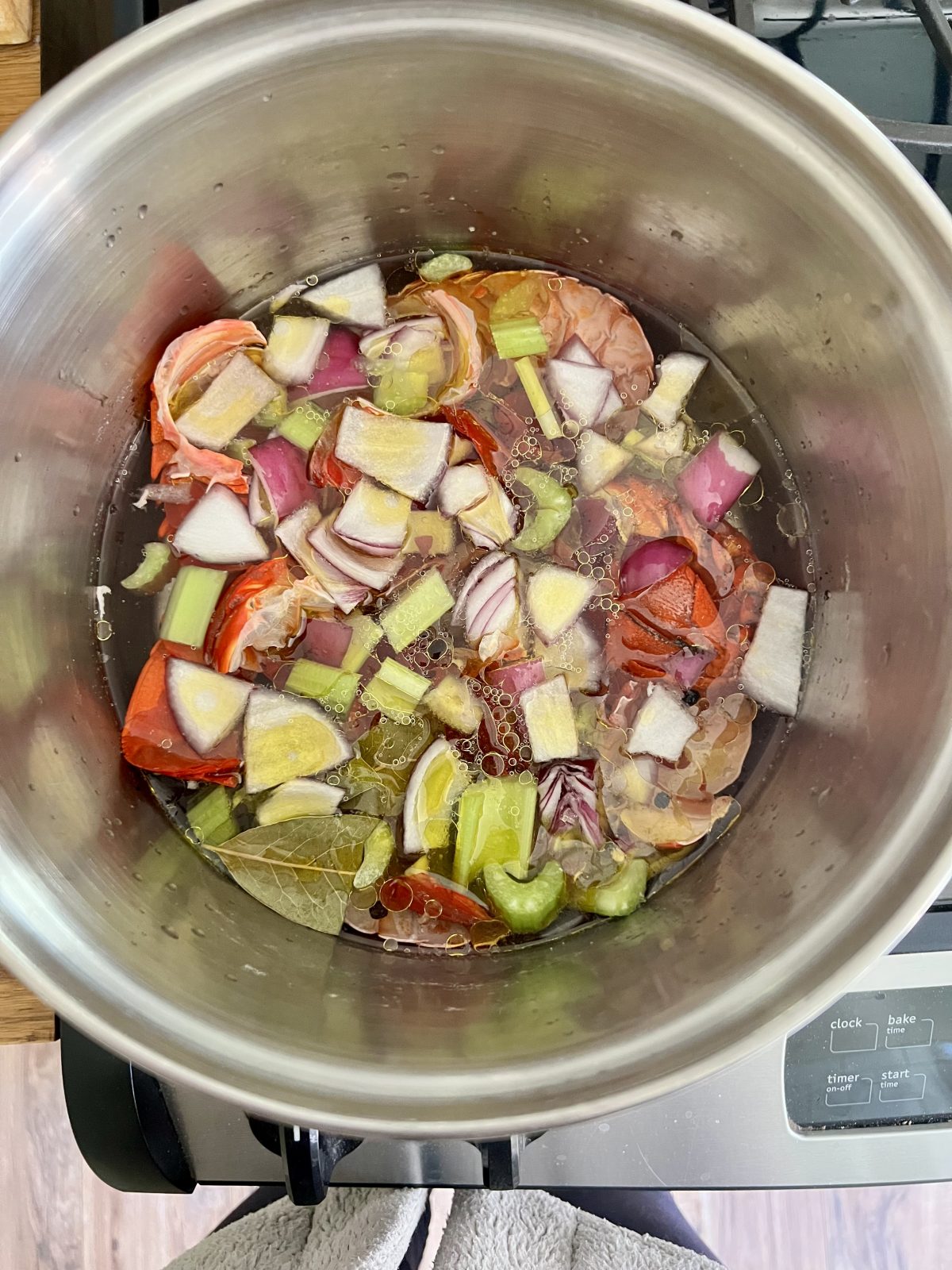
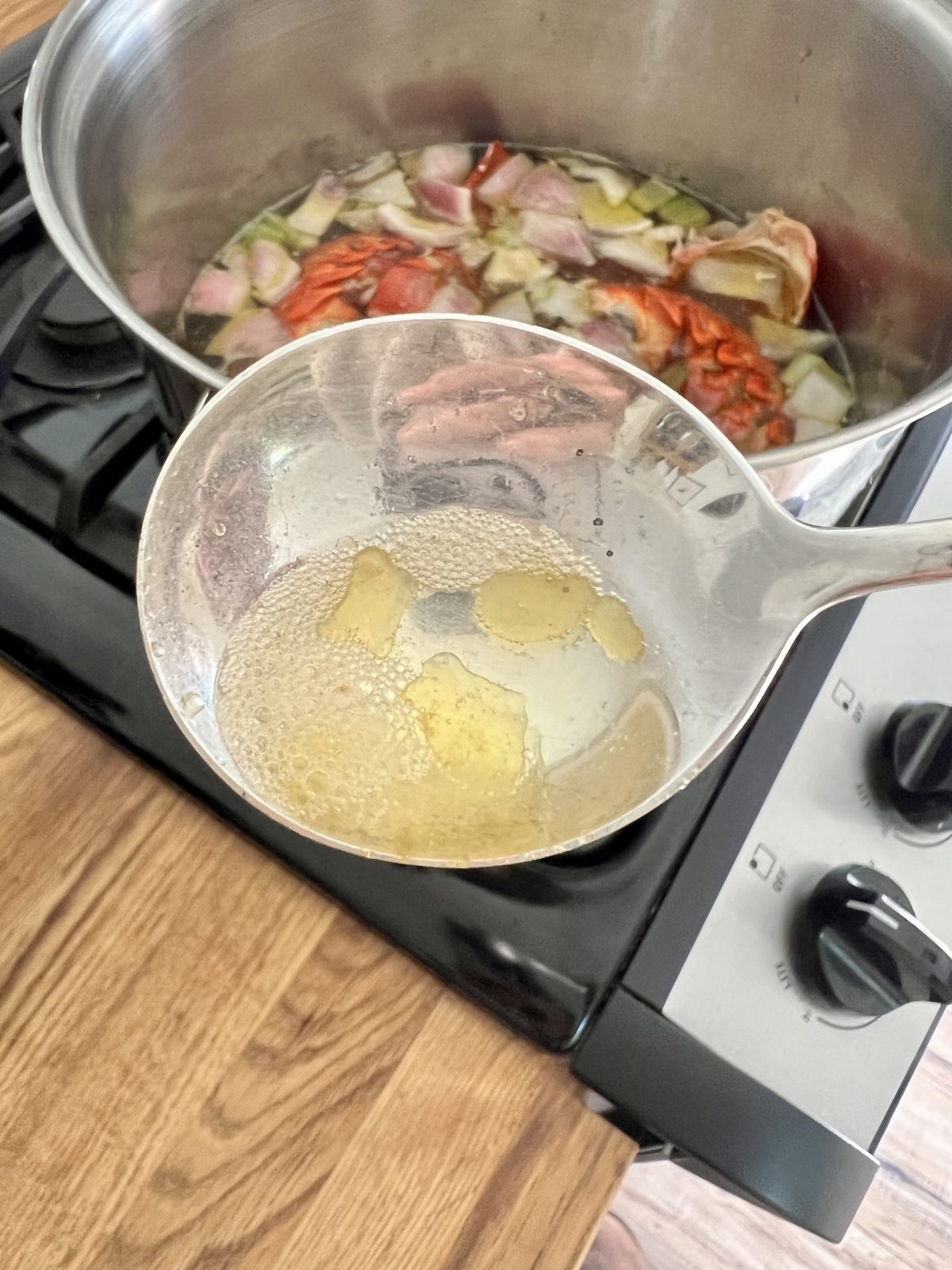
If you want to go deeper, I’ve got more answers for you:
Do they sell lobster stock?
What does lobster stock taste like?
What do you put in the water when boiling lobster?
Do you put lobster in cold water after boiling?
How do you cut open a lobster tail?
Can you overcook lobster stock?
How long does lobster stock last in the fridge and freezer?
Does lobster stock smell when cooked?
How long does lobster stock last in the fridge and freezer?
Can you make stock in a pressure cooker?
Yes! An InstantPot or other multifunction cookers can be used. For example, if you’re using shells from three 1.5 lobsters, add about three quarts of water, then pressure cook on high for 20 minutes. (Make sure to use the natural release.) Taste the broth, then simmer to reduce stock (or evaporate some of the water) to your taste.
Do they sell lobster stock?
Kind of. Shellfish stock is not readily available or usually has additives like clam juice or other natural flavorings to give it a “lobster-esque” flavor. Not the same essence.
What does lobster stock taste like?
Light and savory. Not overpowering. Comparatively, to unsalted chicken stock. (Though add salt to your taste.)
What do you put in the water when boiling lobster?
Fat. It turns out that oil and butter bring out lots of flavors because shells are soluble in fat but not in water. Onions, carrots, and whole peppercorns are popular essential ingredients, but you can add white wine, tomato, anise, ginger, thyme, parsley, and the list goes on, depending on your end goal. (Anyone knows how to make Phở?!)
Do you put lobster in cold water after boiling?
You can, and there are other ways to cool it down. Since the lobster keeps cooking after being steamed or boiled, you can shock it with ice water, cold water, or room temperature to prevent over-cooking.
How do you cut open a lobster tail?
Here is an easy step-by-step guide on safely cutting a lobster tail.
Can you overcook stock?
Yes, and it can ruin the smell and taste. As soon as you see tiny bubbles at the surface, reduce the heat to medium. Simmer the shells for about an hour, skimming foam at the top.
Does lobster stock smell when cooked?
To me, it doesn’t smell fishy at all. The spices in the stock created a subtle aroma of gumbo or savory stew.
How long does lobster stock last in the fridge and freezer?
Stock will keep for up to 5 days in the refrigerator or for up to 3 months in the freezer.
Now that we’ve answered the most pressing questions let’s make this easy lobster stock! How will you use your lobster stock? Please share in the comments below!
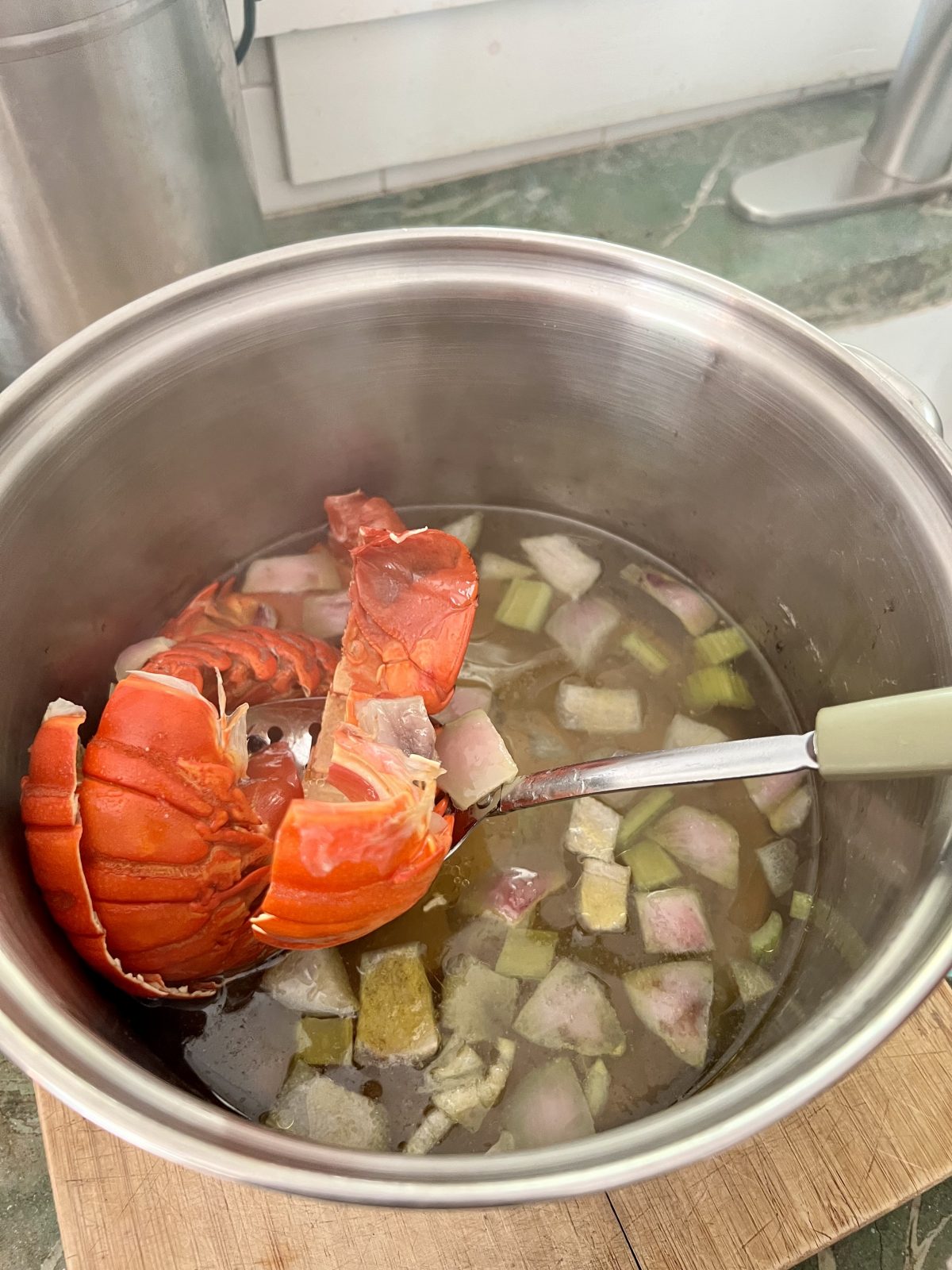
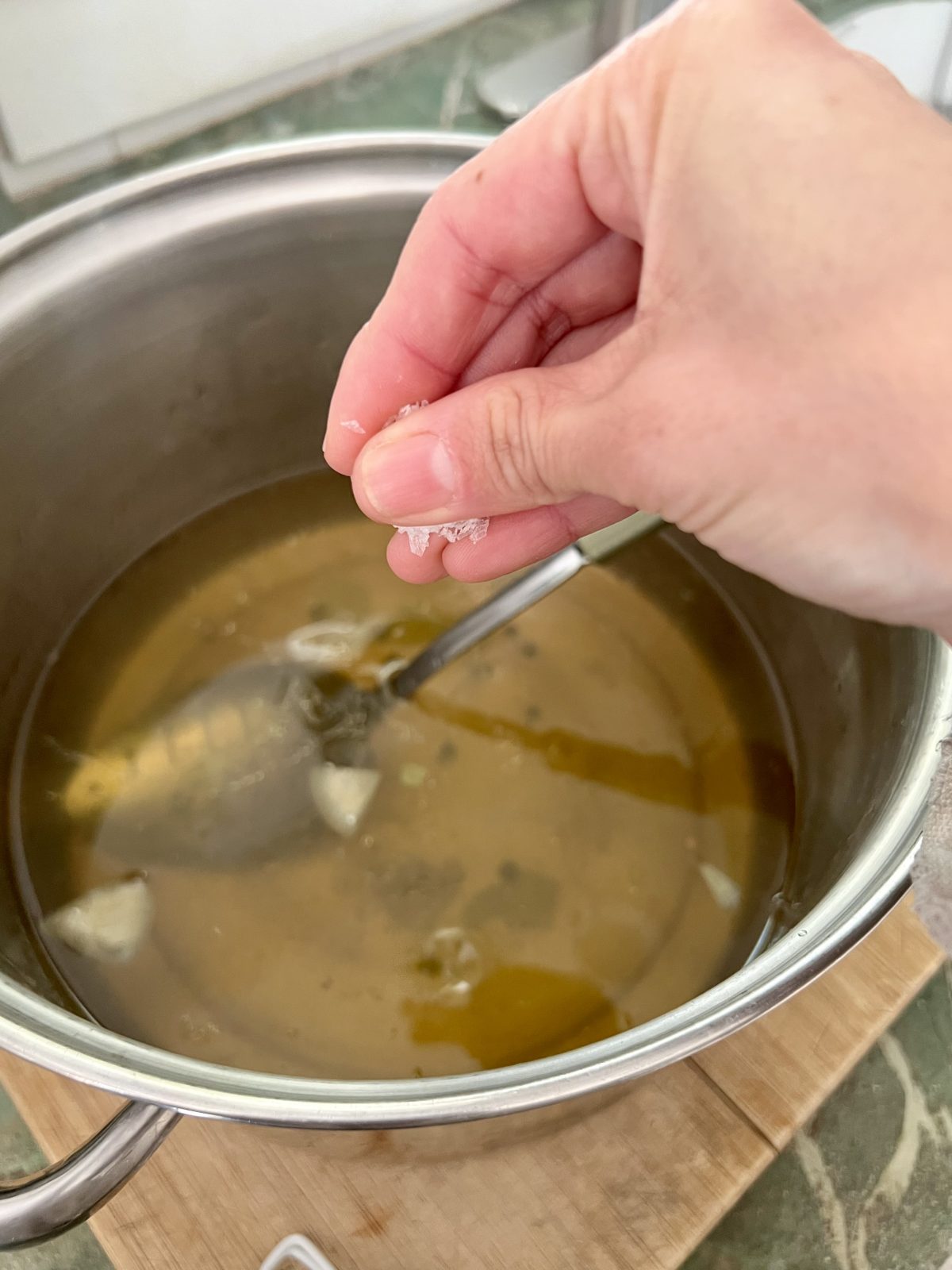
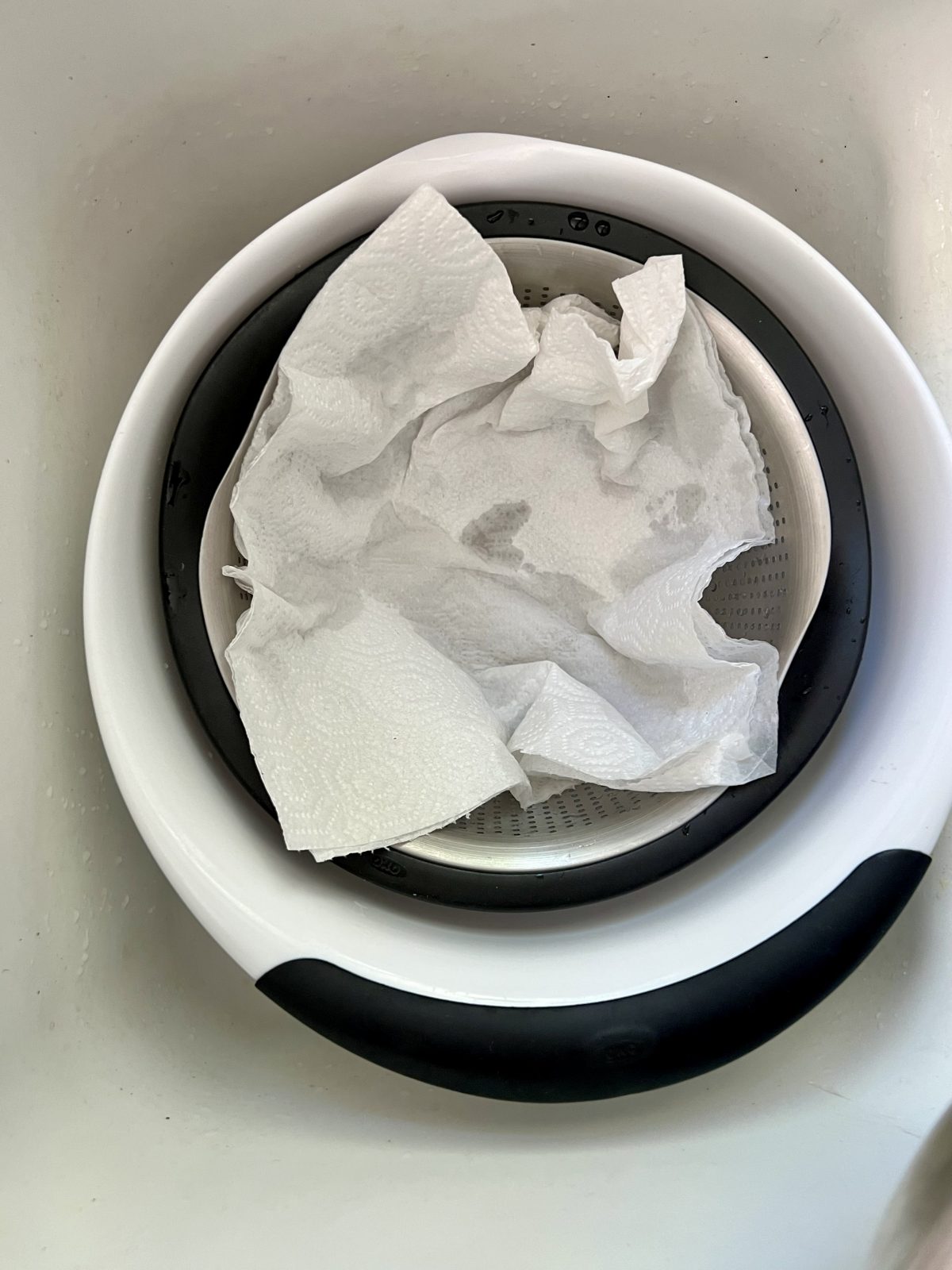
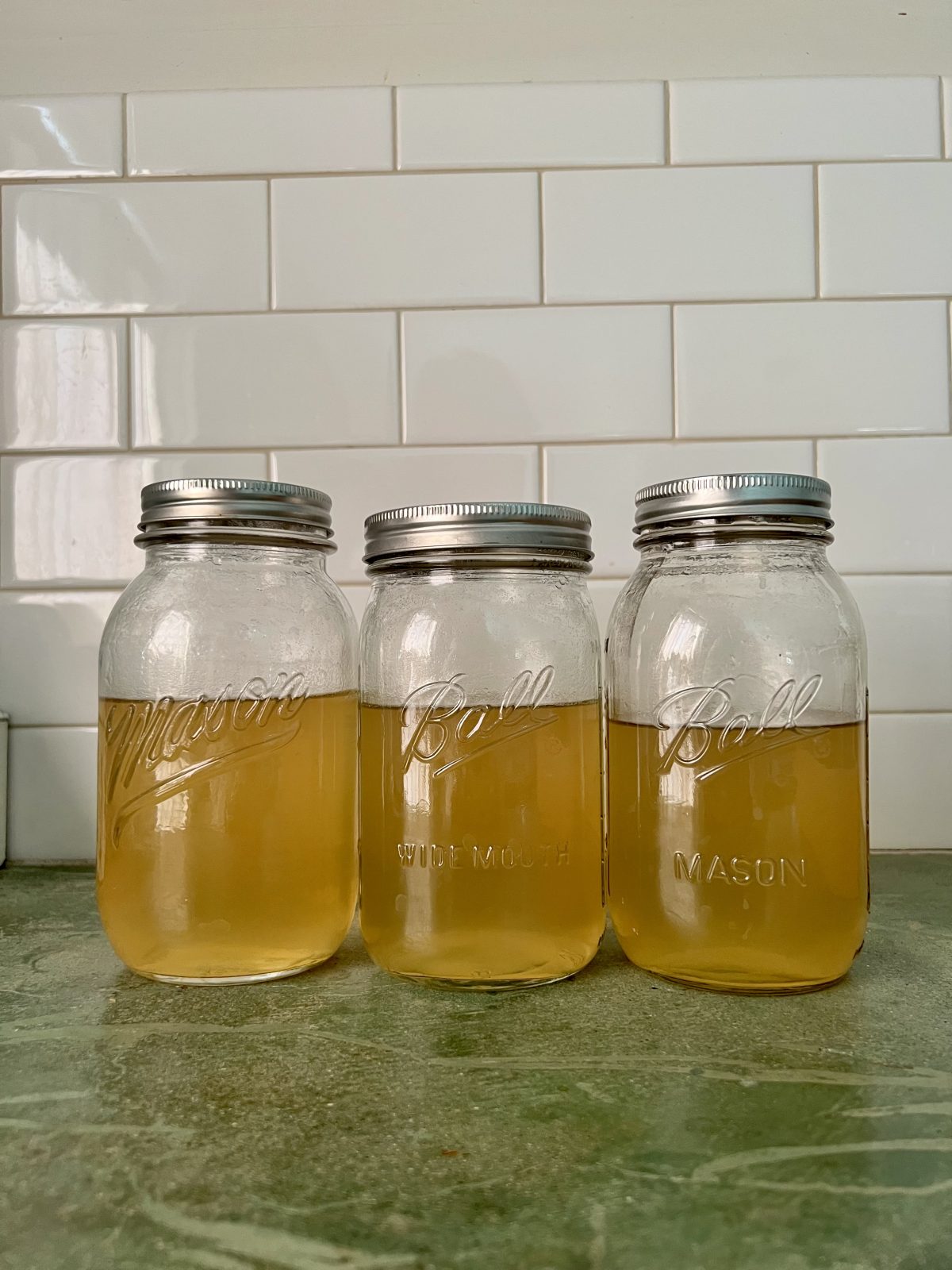
How-To Make the Easiest Lobster Stock Ever
4 rinsed lobster tail shells about 4 oz. each. (Ours were halved from a previous meal, but you can break them up as you’d like.
2 Bay Leaves
2 Celery stalks, roughly chopped
½ Onion, roughly chopped
10 peppercorn
⅓ Olive Oil
Pinch of salt
Directions:
- Put the shells in a large stockpot and add enough water to cover the shells with an inch of water.
- Heat the water on high.
- Add the rest of the ingredients to the pot.
- As soon as you see little bubbles at the surface, reduce the heat to medium. Simmer the shells for about an hour, skimming away the foam with a spoon. (Foam comes from shells releasing impurities as the temp rises.)
- Do not stir the shells, as it will muddy the stock!
- Separate shells and veggies, then strain the stock. You can use a large slotted spoon to remove the solids from the stock. I didn’t have a sieve, so I lined paper towels in a colander, then placed the colander in a larger bowl to catch the stock, and it worked wonderfully!
- I salt the stock after straining to get a more realistic version of the end result.
- Use the stock immediately or let cool before refrigerating for up to five days or freezing for up to three months. Stock freezes well. Just remember to leave some at the top of your container so the liquid can expand as it freezes. (I have cracked many jars learning this the hard way!)
What will you make with your stock? What other ingredients did you add or leave out? We’d love to know; please share in the comments below!
